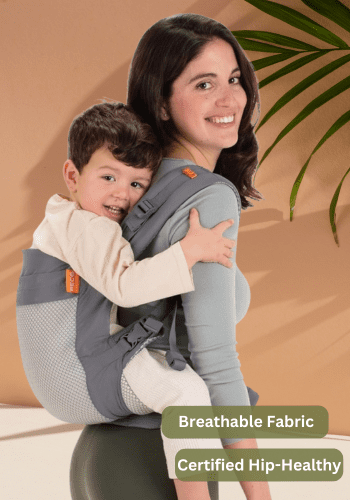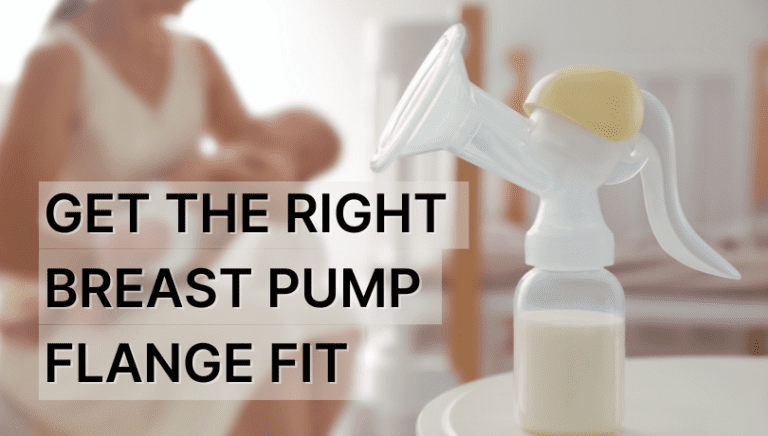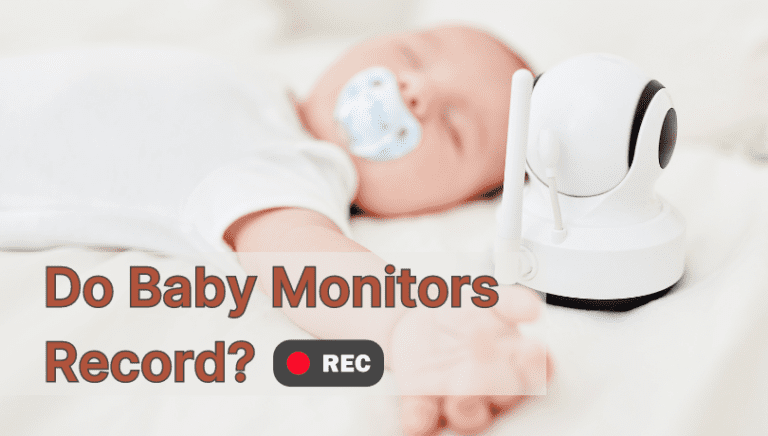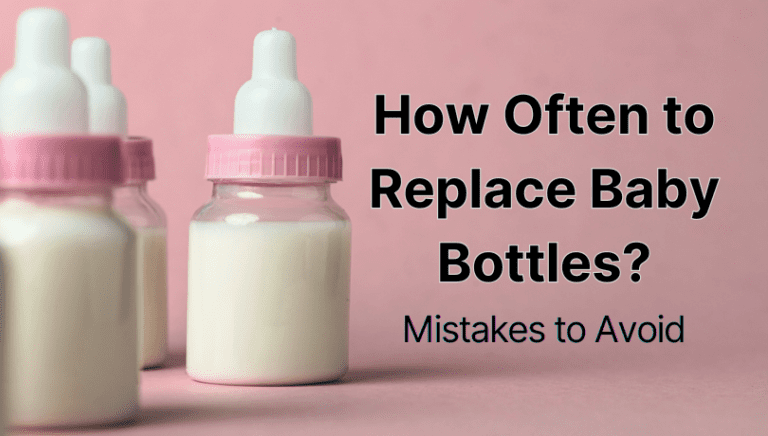Is Baby Carrier Safe For Newborns? Here’s What You Need To Know!
They say the best place to keep your newborn safe is in your arms! But, what if you have other work to do or have multiple kids to take care of? That’s when parental instincts discovered the idea of using baby carriers in historical times. From cloth wraps to buckled carriers — babywearing has covered a long path.
But, is a baby carrier really safe for your newborn?
Before diving into the safety aspects, it’s important to choose the right carrier for your newborn. For a detailed review of the best options, read my take on the best baby carriers.
Many new moms and caregivers may get this question about the baby’s safety. In my opinion, if you use the carriers smartly according to instructions, then they are safe. These carriers are like a HELPING HAND for us. However, each baby essential comes with its pros and cons, right? This aspect becomes important, especially when it comes to newborns’ safety.

If you are also one of those parents or caregivers who need to know the baby carrier’s safety, warnings, and usage tips, this article is for you!
I have raised 6 kids, and, believe me, every day feels like a new journey! So buckle up and get ready to taste the truth of baby carriers for newborns!
Table of Contents
Is Baby Carrier Safe For Newborns?
Risks Of Putting A Newborn In A Baby Carrier:
Aiden was my second baby. He was only 4.5 pounds at the time of birth. I was concerned about his health. And, I needed to pamper him while parenting my firstborn, Avery, who was 2 years old. My mom helped me tie stretchable wraps for Aiden to keep him closer to my skin for warmth and comfort.
However, he lacked weight. That’s why I was concerned about his safety in baby carriers. If you are a MOM, you know how far a mother’s care can go for her baby! A mother’s love endures through all, right?♥️
I used to read about newborns in carriers for Aiden’s maximum safety. Due to that knowledge, I was able to keep him safe and sound in wraps and slings in his newborn phase.
Recommended Reading: Are Baby Walkers Safe?
7 Main Warning Signs That You Must Know While Putting A Newborn In A Carrier:
I feel- these signs are like a BIG RED FLAG for your little ones when they are kept in a carrier:
- Your baby shows an abnormal breathing pattern. It might show flared nostrils, wheezing, rapid breathing, grunting, labored inhalations, etc.
- Your newborn becomes fussy, restless, and panicked. They CRY OUT SO LOUD if they are uncomfortable in the carrier.
- Your newborn curls into the fetal position forming a C-shape of the spine in the carrier.
- The baby cannot move its legs after taking it out of the carrier. This happens when you regularly keep the baby’s leg straight in the baby wrap/sling. It leads to hip dysplasia. (more on this later)
- The baby’s face gets covered, the baby’s chin inclines towards the chest, or the head cannot move. It leads to airway blocking.
- Your baby’s skin, lips, and tongue turn blue. This is an alarming warning of SUFFOCATION.
- Your thin or small-sized baby can fall or slip out of the sling/wrap having loose fabric or slack, unstrapped soft carrier, etc. It can lead to serious head injury, unconsciousness, etc.
If you notice the above-given signs, immediately remove the baby from its carrier and check if it returns to normal condition. If the baby remains abnormal, you may need to visit the emergency department or your pediatrician ASAP.
Which Babies Are Most Likely to Get Affected In Carriers?
Parenthood is a journey of topsy-turvy paths where you can expect the unexpected anytime. It can be either happy, breathtaking, or sad. According to the US Consumer Product Safety Commission (CPSC), there were a record 14 infant suffocation deaths with sling-style carriers from 1991 to 2011.
TBH- All babies must be compulsorily attended to when kept in carriers, especially in the first fourth trimester(0-4 months after birth). In some cases, we need to be extra cautious, such as:
- Physically weak and unwell babies
- Premature babies (preemies): born before the full term i.e. 9 months of pregnancy.
- Low birth weight babies: birth weight less than 5 pounds
Safety Considerations For Newborn In Baby Carriers
From soothing babies to understanding a teenager’s needs, I enjoyed all the sweet and sour moments. I have seen many changes in wraps, slings, and buckled carriers in these 17 years of motherhood. Obviously, they were made to maximize a baby’s safety and reduce a parent’s hassles.
I feel baby wraps and sling carriers were more risky than soft structured carriers as they did not have straps and buckles.
| Did You Know? : US Consumer Product Safety Commission (CPSC) adopted ASTM F2907-22 as the mandatory safety standard for baby sling carriers in the USA. |
Here are some major safety considerations that you must follow while keeping a newborn in a carrier:
I used to go to a mother’s group named ‘New Mom Tribe’ in our neighborhood. This group used to take weekly sessions on parenting, baby milestones, mom’s health, etc. Basically to help moms like me to have a swiftly smooth parenting journey!
Once, the organizers invited a professional babywearing consultant, Ally J. She explained to us about the importance of safety considerations for baby carriers. Those tips were WORTH IT for me to carry my babies in different positions and carrier styles. Here are some useful insights from it:
- Healthy Hip Positioning
- Right Carrier Size
- T.I.C.K.S Rule
1. Healthy Hip Positioning:
The baby’s legs should be in a Frog’s Pose-M Position when kept in a wrap or soft structured carrier. The position should be a wide-leg/spread squat to add stability to the baby’s bottom area. The baby’s buttocks must be below the knees when sitting. Knees should have at least 45 degree arch.

Stretched legs in a straight position add pressure on the baby’s hip joints. It leads to improper torso growth, misalignment of hips, or disability to walk or move legs in the future.
So if you follow proper wrap-tying methods, your newborn will be safe in those slings and wrapping clothes.
Also Read: Are Baby Jumpers Safe?
2. Right Size:
Ideally, soft-structured carriers are suitable for babies above 6 months of age. Because before this age, their necks, heads, and backs do not have control yet. Their neck and head can get shocks and glides if the caregiver moves fast.
Some babies are born prematurely and are thinner than full-term babies. Such babies may not fit properly in such babywearing items due to their tiny arms and legs. That’s why some brands like Ergobaby, Baby Tula, Beco, etc., offer inserts for newborn carriers for a snug fit.

As Aiden was a low-weight baby, I used wraps until he gained proper control of his neck. However, Sawyer (my 5th child) was 8.2 pounds. She was quite chubby, she needed more support. So we had to shift from wraps to soft structured carriers for her when she was 4 months old only.
3. T.I.C.K.S Rule:
In my opinion, this is a CLASSIC WAY to maintain your baby’s safety in the carrier!
The T.I.C.K.S. Rule for Safe Babywearing stands for:
- Tight: The carrier should be firm enough to hold your baby closer to you with a snug fit.
- In view all the times: Your baby should be visible to you each time when it is in the baby carrier.
- Close enough to kiss: Your baby’s head/ forehead should be closer to you. You must be able to kiss the baby easily when you incline your face forward.
- Keep chin off the chest: There should be a space of at least a finger width under your baby’s chin. Baby must not curl in the sling or wrap to avoid blockages in its airways.
- Supported back: The baby’s back should be properly supported in a natural upright position. It should not slump down to the deep part of the sling or wrap to avoid suffocation.
Every time you put your baby in a wrap, sling, or carrier, its face should be above the rim of the fabric. You should be able to see your baby’s face without any obstruction. This ensures that your baby’s head is properly tilted and lying on your sternum.

Adjust your baby’s position if you notice:
- Your baby’s face is covered or pressed tightly against you.
- If your baby is too low in the carrier.
- If your baby is curled with the chin touching the chest.

Additional Tips For Your Baby’s Safety
Apart from the above tips, here is what you can do for your baby to keep it safe in the carrier:
- This is a MUST THING TO DO!: If you are a new mom and do not have help at home, always consult a professional babywearing consultant to learn properly to put newborns in carriers.
- Do not keep the baby in the carrier longer, like for the whole day. Transfer your baby to a bassinet or crib if they get to sleep.
- If your baby is awake, take a timely break from the carrier. Take your baby out of the carrier so that it can stretch its body to relieve physical stress.
- Many reputed carrier manufacturing brands provide instruction manuals and warning signs with carriers. Always read these instructions and signs for age and weight limits before trying this babywearing on your baby.
- A newborn’s skin is so sensitive, thin, and delicate. Ensure the carrier’s fabric is free from toxins, harsh chemicals, and rough textures.
- Keep switching sides of the baby’s head from left to right to maintain its head shape and avoid strain on its neck.
Recommended Article: Are Crib Bumpers Safe?
Why Should We Use Baby Carriers?
Carriers were made to make our parenting job easy. They are not fully unsafe if we think about their PROS.
I had so many good experiences while nurturing my newborns in carriers. Sometimes I felt like these carriers were my BEST BUDDIES to caress and safeguard my babies till their toddlerhood.
Let’s see the advantages of using baby carriers for newborns:
- They offer skin-to-skin contact for the baby to its caregiver for bonding.
- The baby develops sensory and motor stimulations when put closer to the caregiver’s body. It eventually leads to cognitive development in babies.
- They provide a soothing feeling to lessen the crying of a fussy and restless baby.
- A mother can breastfeed her newborn in the carrier itself.
- Carriers help to maintain the round shape of the baby’s head.
FAQs Related to Baby Wearing Safety
What is the best age to start using a baby carrier?
We can start using baby carriers for newborns who are 4 to 6 weeks old. Traditionally, one can use wrap carriers after the baby’s birth too.
How long can a newborn be in a baby carrier?
There is no upper cap for this. It depends on your baby’s comfort and your physical strength to carry a baby in a carrier. But, I suggest taking a break from the carrier and removing the baby from it every 1-2 hours. It helps to relieve strain on your back and shoulders; and reduces pressure on the baby’s body.
Are baby carriers a good option for newborns?
Yes. Baby carriers help newborns to stay closer to their caregivers. They develop sensory stimulation, cognitive growth, and emotional bonding with their caregivers when in a carrier.
Are baby carriers safer than strollers for newborns?
Carriers and strollers are equally safe if you use both baby essentials correctly. Baby carriers help to develop bonding, while strollers ensure secure positioning. Newborn babies are wiggly due to a lack of control in their muscles. So, improper positioning, tight strapping, and lack of attention can lead to suffocation and breathing hazards in both tools.
Key Takeaways
Baby carriers are safe when we learn to use them properly. And, the iconic TICKS rule and babywearing consultations will definitely help you with that. Stretchable wraps and slings are practical and easy options for babywearing.
But, wherever we put the baby in these carriers, we must seek healthy hip positioning and comfort for our little ones. And, REMEMBER- always supervise your baby when it’s in the carrier.
Being a mom, I recommend trusting your inner parenting instincts to choose what is best for your baby. Whether it is a carrier or any other baby essential, your baby will be safe when you understand its cues and needs.
Lastly, I will say- YOU CAN DO THIS! Enjoy Your Parenthood!






